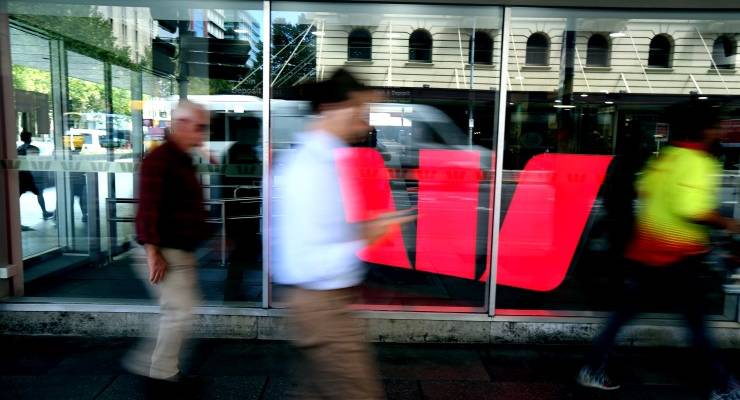
By the time Westpac, ANZ, NAB and Macquarie Group have all finished releasing their half-year results by the end of next week, they are likely to have collectively added more than $4 billion in COVID-19 related bad debt write-offs to their bottom lines.
NAB was the first to reveal on Monday morning, dropping a surprisingly small $828 million COVID-19 bad debt provision into the books while pressing go on an emergency $3.5 billion capital raising to fortress its balance sheet for the stormy months ahead.
Westpac followed yesterday by disclosing an additional $1.6 billion COVID-19 bad debt provision with the half-year results to be released in full next Monday.
We get the ANZ results tomorrow, and then Macquarie — Australia’s fifth biggest bank with a market capitalisation of $34.6 billion — will release its full year results on May 8.
Dusting off some data collected during the global financial crisis, it is interesting to look back at how the big four’s bad debt provisions cranked up during that crisis:
CBA full year bad debt provisions
- 2006-07: $434 million
- 2007-08: $930 million
- 2008-09: $2.935 billion
- 2009-10: $2.711 billion
- 2010-11: $1.28 billion
- 2011-12: $1.09 billion
- 2017-18: $1.08 billion
- 2018-19: $1.2 billion
ANZ full year bad debt provisions
- 2006-07: $537 million
- 2007-08: $1.273 billion
- 2008-09: $3.06 billion
- 2009-10: $1.787 billion
- 2010-11: $1.21 billion
- 2017-18: $688 million
- 2018-19: $794 million
NAB full year bad debt provisions
- 2006-07: $790 million
- 2007-08: $2.486 billion
- 2008-09: $3.81 billion
- 2009-10: $2.263 billion
- 2010-11: $1.8 billion
- 2017-18: $791 million
- 2018-19: $927 million
Westpac full year bad debt provisions
- 2006-07: $482 million
- 2007-08: $931 million
- 2008-09: $3.29 billion
- 2009-10: $1.456 billion
- 2010-11: $993 million
- 2017-18: $710 million
- 2018-19: $794 million
Knowing that a big jump is coming, you may as well take it early, something the banks didn’t do during the GFC when you look at the enormous jump in bad debts between 2007-08 and 2008-09.
The GFC was well underway by September 2008 when Westpac, NAB and ANZ ruled off their books for the 2007-08 years, but only NAB went really hard on the bad debt provisions that year.
This time around, NAB has started modestly with provisioning, Westpac has gone harder and the others are yet to show their hand with CBA not due to release their full year results until August.
The recent Australian Prudential Regulation Authority message about reduced bank dividends has put the cat amongst the pigeons for dividend-reliant retail shareholders with Bank of Queensland deciding earlier this month that it would defer its dividend decision until the situation is clearer.
Have a close read of the actual letter that APRA chairman Wayne Byres sent on April 7, which followed announcements in Europe, the UK and New Zealand that all bank dividends would be suspended for the duration of the crisis.
The APRA goal seems more modest, aiming for the banks to not have any net reduction in capital when it comes to dividend payment time.
NAB certainly avoided that by announcing a $3.5 billion capital raising on the same day it declared a dramatically cut, fully-franked 30c dividend would be paid on July 3, costing the bank $895 million.
This will be the lowest NAB dividend payment in more than two decades. Even during the height of the GFC in 2009, it managed two 73c dividend payments, albeit with significantly less shares on issue at the time.
Given that Australia is a great nation of retail shareholders and the banking sector has the highest proportion of retail ownership courtesy of all those reliable fully franked dividends, you would think the banks would turn to their loyal mum and dad investors to help recapitalise in their hour of need.
Alas, NAB decided to raise $3 billion from institutions on Monday with only $500 million to follow in the Share Purchase Plan (SPP) for retail investors even though they collectively own 48% of the bank.
ANZ is also tipped to possibly launch a capital raising tomorrow which will hopefully be a 50-50 split with institutions coughing up around $1 billion in a placement, ideally priced by a competitive book build and with no investment banking underwriters. This will be followed by a $1 billion SPP for retail investors pitched at a 2-5% discount to whatever the institutions agree to pay or a small discount to the prevailing market price when the offer closes.
If the banks raise big licks of fresh capital in order to book large bad debt write-offs, it makes is easier for credit managers to actually be a bit more lenient when deciding which business to kill and which to save.
For instance, now that Westpac has announced $1.6 billion in COVID-19 write-offs, managers can almost use it like a grants program until they hit that number.
If restructuring a $5 million small business debt down to $3 million is enough to keep the business afloat and 50 people employed, then that is the sort of hit that our big four banks should be voluntarily taking.
And if the federal government wants to really encourage our big banks to convert their normally ruthless credit departments into caring grant givers, perhaps they could temporarily give them a holiday from the super-tax obligations which are costing them six basis points on their liabilities, or almost $2 billion a year.
It could be like a good behaviour bond with the bank levy, a then-treasurer Morrison initiative in the 2017 federal budget, reintroduced as soon as bad debts return to normal levels or if too many stories emerge of the banks heartlessly pulling the plug on thousands of small businesses.








There’s a scene in Tom Wolfe’s A Man in Full where the mogul, facing bank foreclosure, sacks half his staff across his empire. His aghast 2IC asks why. The boss says that to bankers, sting out salaries was akin to just giving away good money. They would get the message.
That’s bankers.
Can someone explain to me the justification for these fantasies of V-shaped or U-shaped economic recovery.
I see little general appreciation for the scale of the social and economic catastrophe that is happening, obscured by all the trivial discussion of the privations of isolation. Recall that we started at a point where only population increase has caused any growth in GDP for nearly 5 years. Now, immigration is unlikely to resume before 2021 (and that is optimistic). Hundreds of thousands on service businesses are very probably broke now and that will shortly materialise when the emergency financial assistance is discontinued. International tourism is comatose and will remain so well into 2021 causing all the business that feeds off that to fail.
These bad debt provisions are likely to constitute another fantasy. It seems to me likely that an avalanche of loan default will drive at least one of the major banks to the wall. Provisions and capital raising are likely to prove hopelessly inadequate.
I suggest it is time to cease looking at economics through the magical prism of neo-classic market economics (all of which is a long-standing collective fantasy).
Government has not yet felt the real burden of stimulating demand in what is now an economy wrecked by suspension. And the only factual historical guidance is post the Great Depression and post WW2. The technical nonsense of conventional economic thinking is about to be exposed as an inadequate fraud. That is going to be exacerbated by a government utterly incapable of economic innovation. It is time to start understanding how deeply we are in the sh*t out of which there is no ‘road’. There is only a slippery upward slope to a new and enduring type of reality. I am current 64 and I doubt I will see the end of the effects of this catastrophe in my remaining lifetime. I will not be surprised to see Qantas, at least one of the banks, major insurers and others nationalised in the treacherous and slow scramble up that slippery slope. At least that will quell the hysterical complaints about red tape.
Banks claiming they write off bad debt is a bigger bullshit story than Scomo claiming the government is borrowing to fund the stimulus, he`s printing the money and the banks aren`t letting anybody off the hook if they owe them and cant pay they sell you up lock stock and barrel, banks don’t lose money, their customers do, once people robbed banks, now banks rob people.